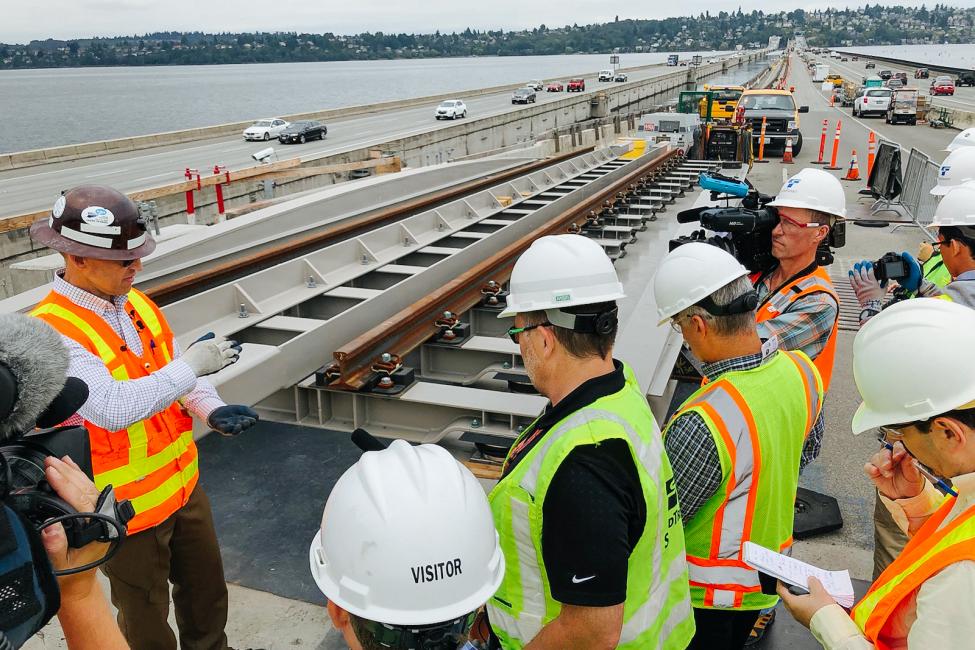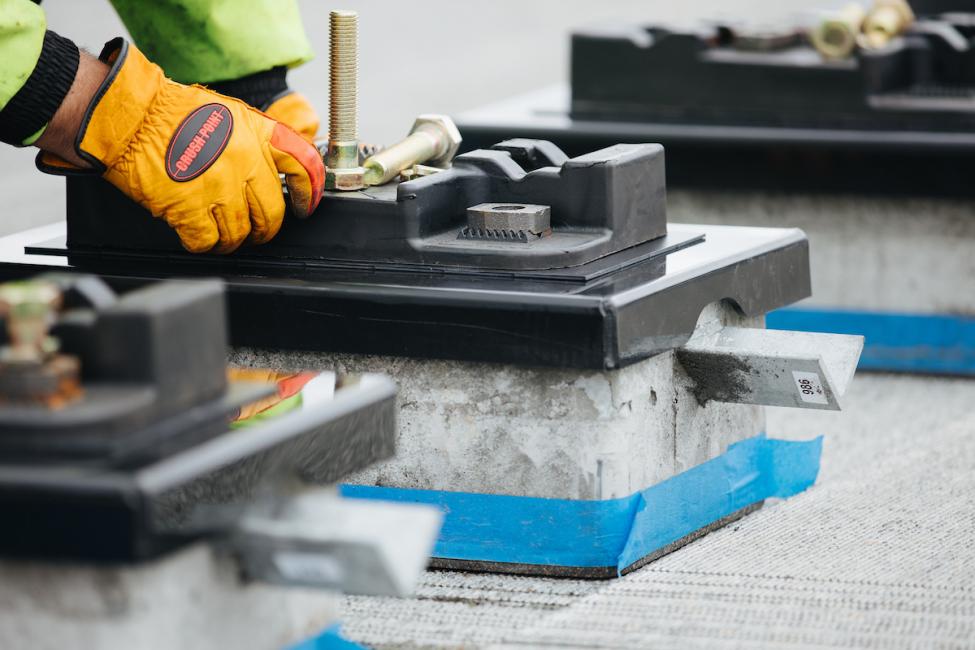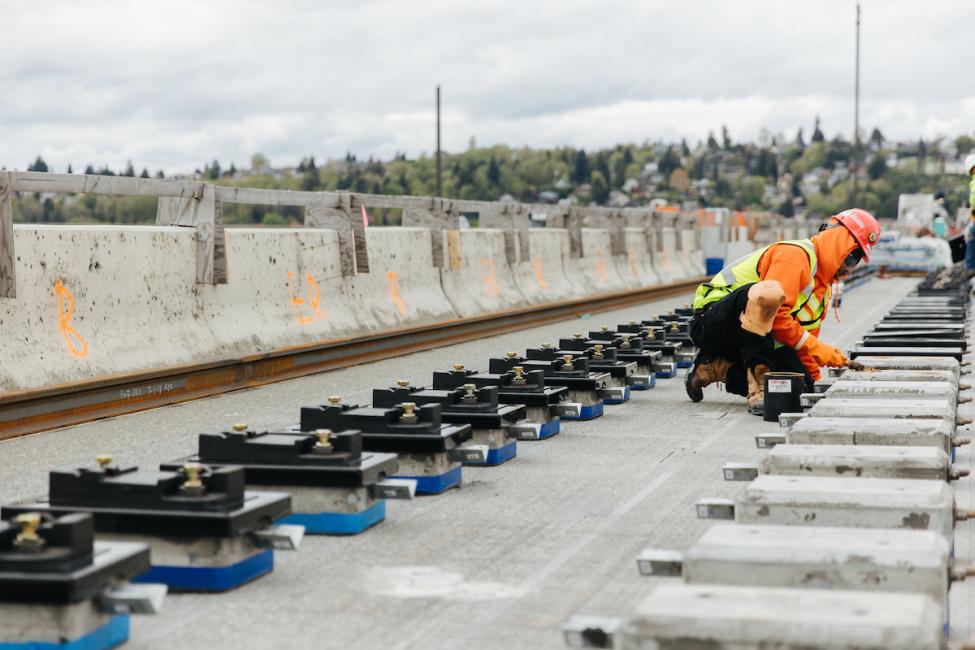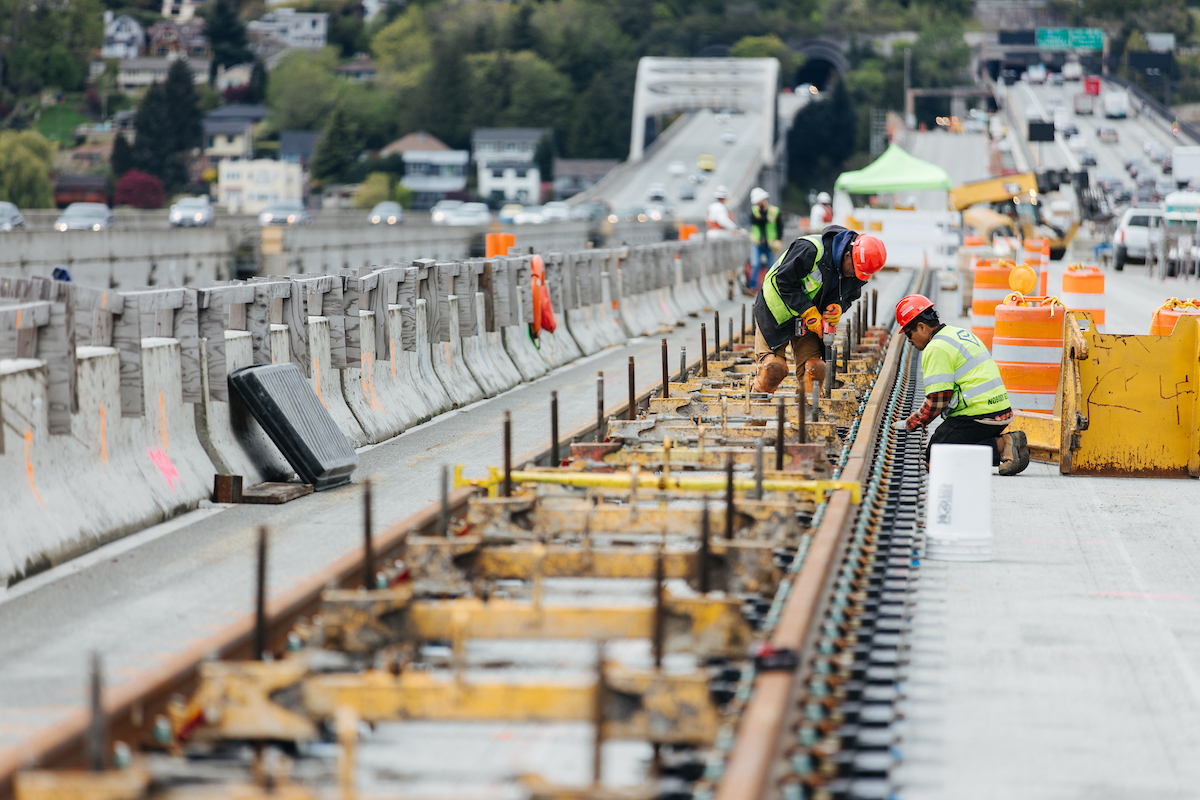Work is really picking up on the Interstate 90 floating bridge as Sound Transit crews work to extend Link light rail’s Blue Line to the Eastside and open for service in 2023.
One of the most exciting elements of the entire alignment is currently being installed.
Light rail has never been installed on a floating bridge before, which presented engineers with many intriguing challenges, both for building and operating the system.
One of the most difficult tasks was to adapt the rails to the movement of the bridge.
Work to strengthen the bridge through a process called post tensioning is complete, which means crews are on to the next step: positioning eight track bridges that connect the land side of the bridge to the floating section.
Here's a look at how it will all come together.
Full-size track bridge prototypes were tested at the Transportation Technology Center in Pueblo, Colo. They passed all critical test criteria with the ability to provide safe and comfortable light rail operations at planned speeds up to 55 mph, the highest speed that Link operates.
Keeping stray currents off the bridge
Engineers also had to come up with a way to make sure our electrically-powered trains could travel safely across large bodies of water, especially during Seattle’s rainy months. (If you remember your middle school science class, you’ll know electricity and water don’t mix).
The answer is cathodic protection – a system that will collect stray current and ground it into a piece of sacrificial metal. This protects the bridge’s steel anchor cables from corrosion.
Corrosion could compromise the bridge’s lifespan, but so could drilling holes in the concrete.
Typically, rail is fastened with concrete railroad ties. We had to be careful not to add too much weight to the bridge, which is essentially a concrete ship.
Any weight must be placed strategically to ensure the bridge remains level. We decided to create light-weight concrete blocks using a special process, which would also be resistant to stray current.
The light-weight concrete blocks and the polymers used to attach them to the bridge deck were extensively tested at the University of Washington.
When installation is complete, there will be about 9,000 of these blocks on the bridge and approaches.
These are exciting times as some of the most complex work on the Blue Line moves ahead this summer.
It will be even more exciting to take a rush-hour trip by train between downtown Bellevue and Seattle in 15 minutes when the line opens in four years.



